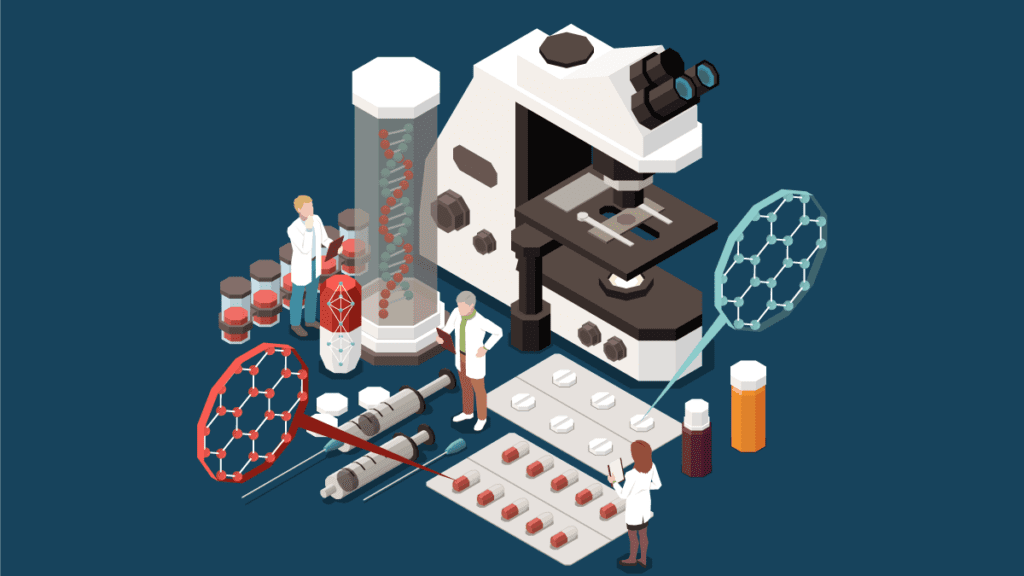Nanotechnology in drug delivery market to reach $182.3 billion by 2027

While 2020 will always be written off by many as the year that vastly disrupted people’s life, medical researchers may well look back at this year at the tipping point that saw the world place greater emphasis on their work.
While funds poured into COVID-19 vaccinations, medical technology was making a silent rise behind the curtain; and nanotechnology in drug delivery was one of its main champions.
According to UnivDavos Market Insights, the global nanotechnology in drug delivery market is expected to grow at a CAGR of 19.9 percent from 2021-2027 to reach $182.3 billion by 2027.
The global nanotechnology in drug delivery market is experiencing significant growth on account of surging prevalence of cancer, cardiovascular and other diseases. More people die from cardiovascular disease worldwide than from any other source, according to the World Health Organization with over 17.9 million persons succumbing to the disease per year.
Nanotechnology in drug delivery applications occur using designed nanomaterials as well as forming delivery systems from nanoscale molecules such as liposomes. The effects of it would lead to improved ability to deliver drugs that are poorly water soluble, provides site-specific targeting to reduce drug accumulation within healthy tissue, and helps retain the drug in the body long enough for effective treatment.
In 2020, American Heart Association has set a goal of reducing cardiovascular disease and stroke deaths by 20 percent and thus focused on enhancing factors such as physical activity, diet, obesity/overweight, smoking, blood pressure, cholesterol, and blood sugar.
“The rising number of deaths has caused an increased burden among people, which can surge the demand for novel nanotechnology in drug delivery techniques that are more efficient than traditional medicine and therefore is expected to drive the general market to grow,” the UnivDavos report explained.
It also highlighted a major expansion in the transformation of nano-based cancer therapies and diagnostics and different new technologies that are in the pipeline. Nanomedicine and nano delivery systems are being utilized as diagnostic tools or in delivering therapeutic agents to specific targeted sites in a controlled manner wherein materials are used in the nanoscale range.
“Since 1995, nearly 50 nano pharmaceuticals have received FDA approval and are currently available for clinical use. In oncology, over 20 percent of the therapeutic nanoparticles already in clinics or under clinical evaluation have been created. Most FDA-approved therapeutic nanoparticles are currently being designed for the re-formulation of combinations of chemotherapeutic drugs with polymeric nanoparticles,” the report noted.
The current impact of COVID-19 on global health is enormous, but in addition, the worldwide impact on the economy, employees, and companies is going to be considerable. This global emergency calls for a science and technology response to the COVID-19 pandemic, where advanced solutions during the epidemic are anticipated to be explored by nanotechnology.
A study performed by Leuschner brings a direction in the use of nanotechnology to control the cytokine storm which is amongst few clinical complications of COVID-19. Nanoparticles perform an essential role at different stages of disease pathogenesis, contemplating their inhibition potential in the initial attachment and membrane fusion during viral entry and infected cell protein fusion.
The report by UnivDavos categorized the nanotechnology in drug delivery market in several aspects; by technology, the market is primarily bifurcated into nanoparticles, liposomes, nanocrystals, micelles, and others.
The nanoparticles segment dominated by nanotechnology in drug delivery market and will grow at 19.4 percent CAGR to reach US$ 48.1 billion by the year 2027.
By application, the market is primarily segmented into oncology, cardiovascular/physiology, anti-inflammatory/immunology, neurology, and anti-infective.
Amongst application type, oncology accounted for the largest share and is expected to grow at 20 percent CAGR during the forecast period 2021-2027. In 2019, the oncology segment accounted for a revenue share of almost 36 percent.
The nanotechnology in drug delivery market by geographical segmentation includes North America (the United States, Canada, and Rest of North America), Europe (Germany, United Kingdom, Italy, France, Spain, and Rest of Europe), Asia-Pacific (China, Japan, India, Australia, South Korea, and Rest of Asia-Pacific), and the rest of the world.
Based on the study’s estimation, the North America region dominated the market with almost US$ 18.9 billion revenue in 2019. At the same time, the Asia-Pacific region is expected to grow remarkably with a CAGR of 22.5 percent over the forecast period based on the increasing population and modernization of healthcare infrastructure.
